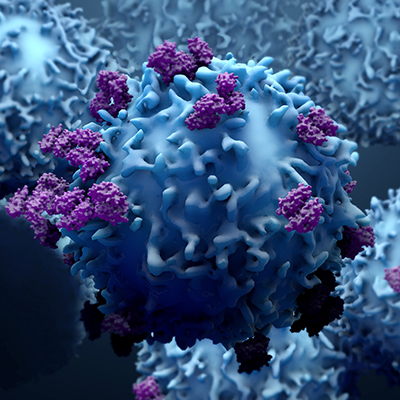November 17, 2020 -- A new study identifies how metabolism exerts control over regulatory T (Treg) cells, which play a key role in the recognition of foreign and self-produced molecules. The findings, published in Cell Metabolism on November 17, may help scientists identify new drug targets for autoimmune diseases and cancers.
Foxp3-expressing Treg cells can suppress the activity of various types of immune cells and play key roles in the maintenance of self-tolerance and in the regulation of immune responses against pathogens and tumor cells. Heterogenous Treg cells have distinct phenotypes and functions based on their activation status. Upon antigen stimulation, naïve thymus derived Treg cells can differentiate into effector Treg (eTreg) cells and migrate to peripheral tissues to enforce immune tolerance.
"This process is quite fascinating to us, and helps explain how metabolites can drive selective signaling pathways to enforce the differentiation, persistence, and function of eTreg cells," said author Hongbo Chi, PhD, of the immunology department at St. Jude Children's Research Hospital, in a statement. "We were looking specifically at suppression of autoimmunity that can develop spontaneously in our models, but we also know Treg cells play a role in multiple diseases."
eTreg cells play a role in preventing autoimmune diseases such as lupus or rheumatoid arthritis. Alternatively, they can be detrimental in other diseases, such as cancer, that often mimic self-antigens in order to support tumor development.
Selective kinase signaling (e.g., mammalian target of rapamycin complex 1 or mTORC1) induces mevalonate metabolism and shapes Treg cell functional fitness and differentiation. The mevalonate pathway generates isoprenoids, a diverse group of organic chemicals derived from isoprene (5-carbon compound) that give rise to cholesterol, vitamin K, coenzyme Q10, and steroid hormones.
The mevalonate pathway also generates farnesyl pyrophosphate (FPP) via farnesyltransferase (catalytic subunit encoded by Fntb) and geranylgeranyl pyrophosphate (GGPP) via geranylgeranyltransferase type 1 (catalytic subunit encoded by Pggt1b) to mediate post-translational lipid modifications.
The functions of metabolism-dependent post-translational lipid modifications and whether Fntb and Pgg1b genes play shared or discrete roles in Treg cell status has been unknown until now.
Balanced control of eTregs via metabolic pathways
St. Jude Children's Research Hospital scientists found that bidirectional metabolic signaling, which intersects with T-cell receptor (TCR) signaling and metabolism-dependent post-translational lipid modifications, are critical to the control of eTreg cell function.
"We were able to dissect how metabolic regulation controls eTreg cell differentiation and maintenance," said first author and graduate student Wei Su of the immunology department at St. Jude Children's Research Hospital. "This bidirectional interplay between intracellular signaling and metabolism allows eTreg cells to maintain the self-tolerance in our body."
Using mouse models, the researchers demonstrated that isoprenoids are crucial for establishing activated Treg suppressive activity, and that Treg cell-specific deletion of Fntb or Pgg1b triggers the development of fatal autoimmune diseases associated with impaired eTreg cell accumulation.
Specifically, Treg cells undergoing TCR activation upregulate genes in the mevalonate pathway to generate FPP and GGPP and promote activated Treg cell suppressive activity. Fntb promotes mTORC1 activity and inducible costimulatory (ICOS) expression for eTreg cell maintenance, while Pggt1b orchestrates TCR and downstream Rac signaling to promote eTreg cell differentiation. Further, the isoprenoid-dependent proteins farnesylation and geranylgeranylation in Treg cells are required for immune tolerance.
In this way, the researchers determined that mevalonate metabolism-dependent post-translational modifications serve as a metabolic rheostat (a regulatory mechanism that operates in a graduated manner) for the maintenance and differentiation of eTreg cells.
"These pathways have been of long-standing interest outside of the immune system for a way to inhibit inflammatory responses," said author Nicole Chapman, PhD, of St. Jude's immunology department. "Our study provides a deeper understanding of the molecular interplay between signaling and metabolism and could allow for more potent and selective targeting of downstream metabolic functions in Treg cells."
Do you have a unique perspective on your research related to immunology or metabolism research? Contact the editor today to learn more.
Copyright © 2020 scienceboard.net







